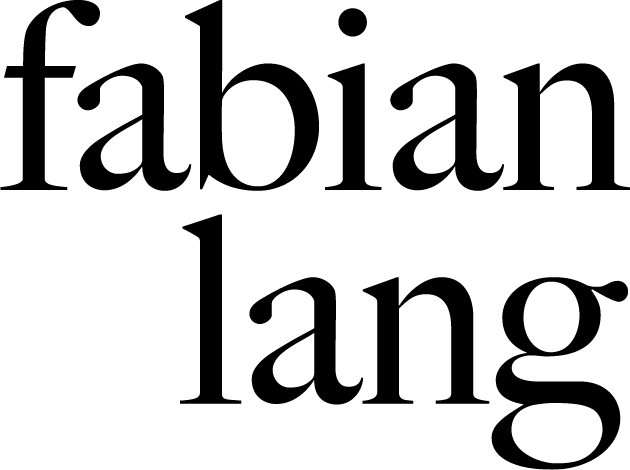INTERIOR
Elena Alonso | EJR Barnes | Christian Hidaka | Caitlin MacBride | Kilian Rüthemann | Sam Stewart | Laila Tara H | Raphaël Zarka
21 April 2023 - 2 June 2023
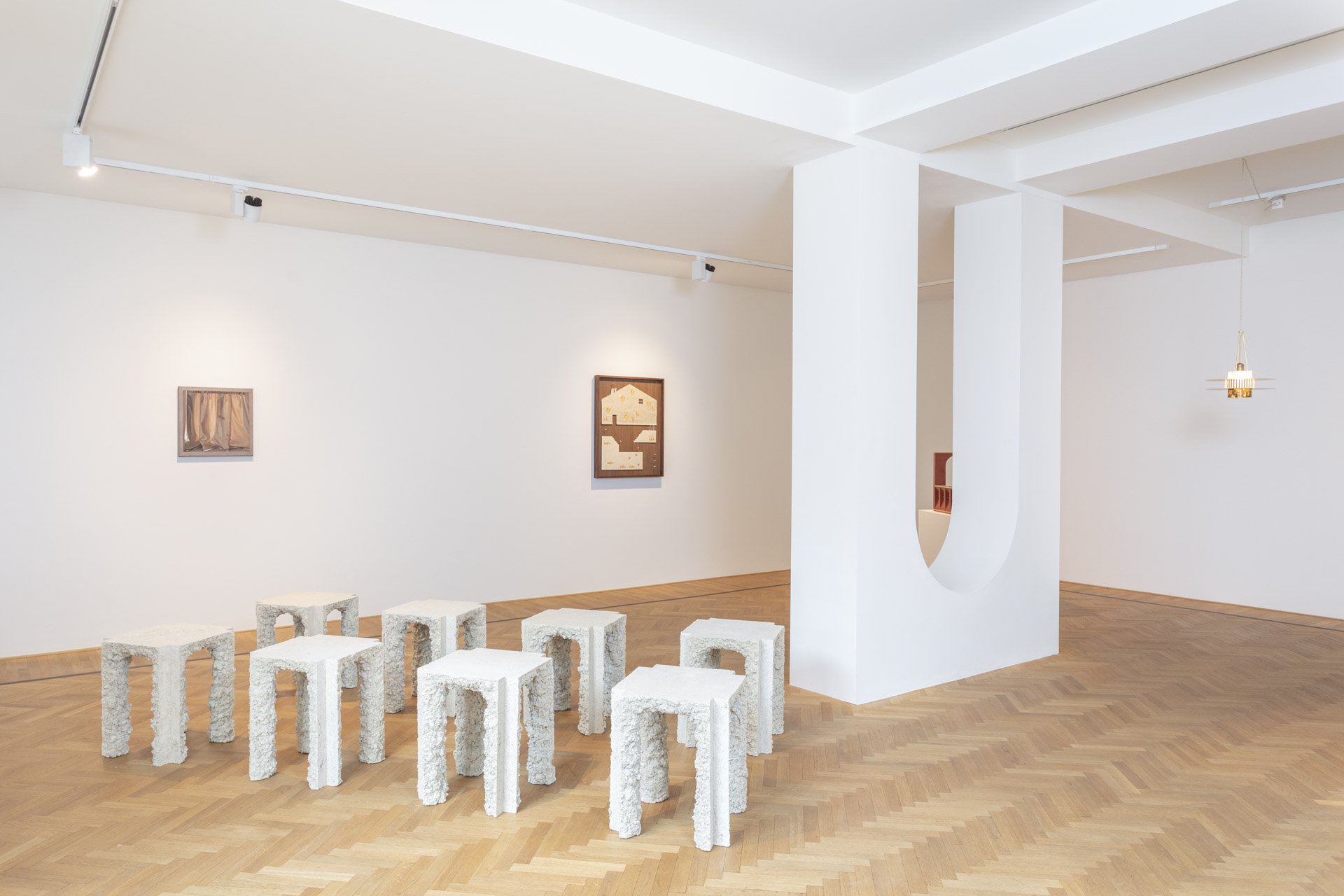
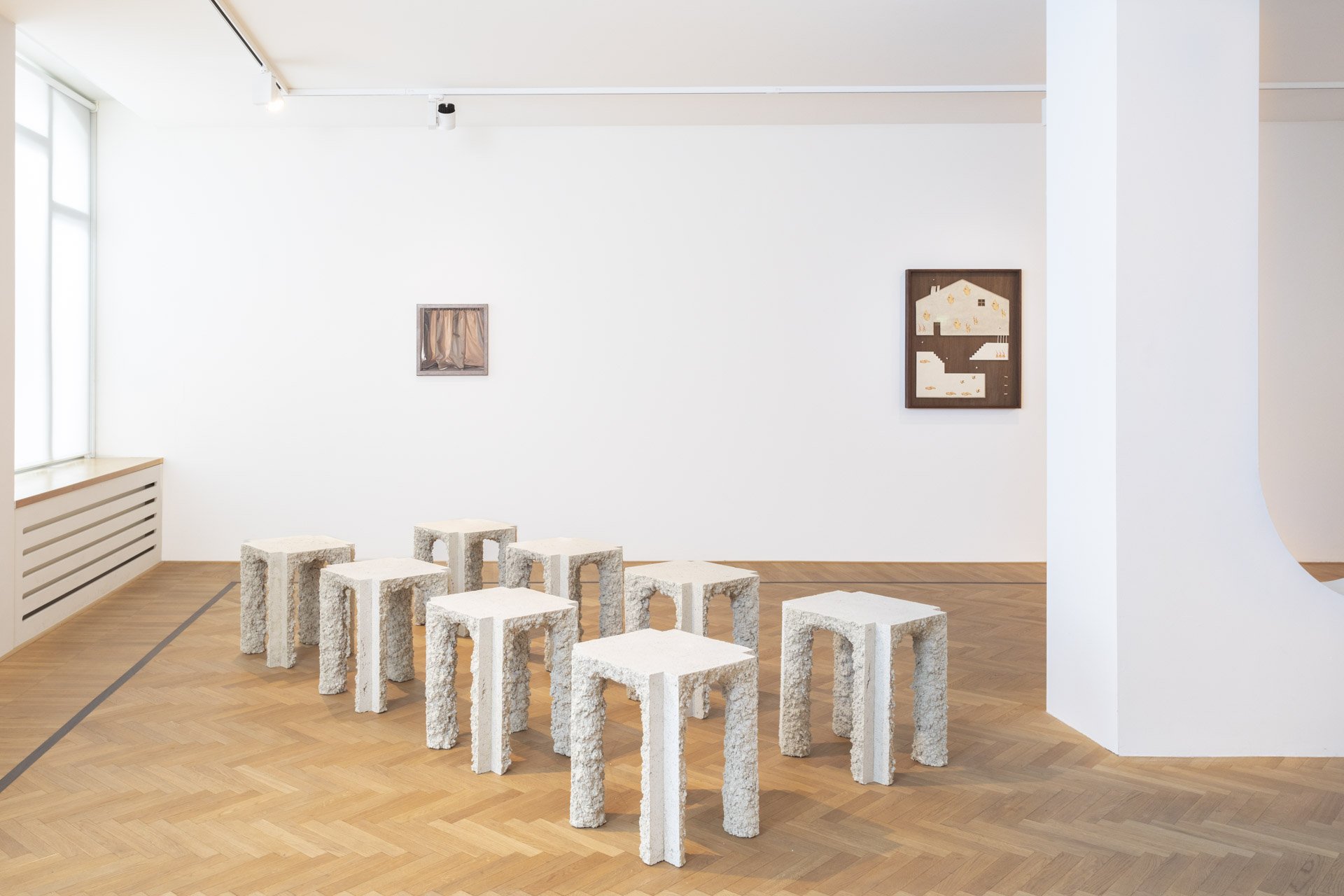
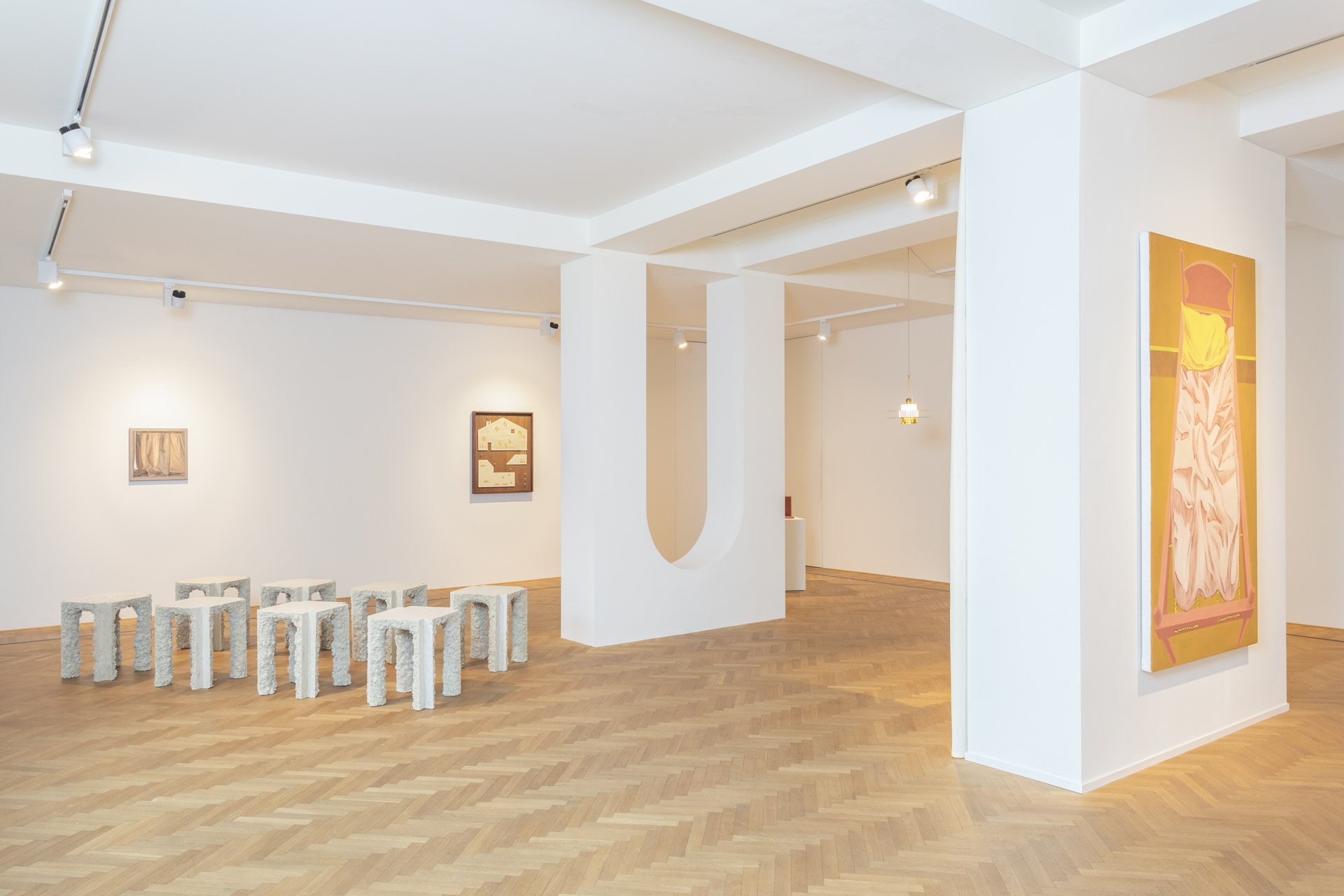
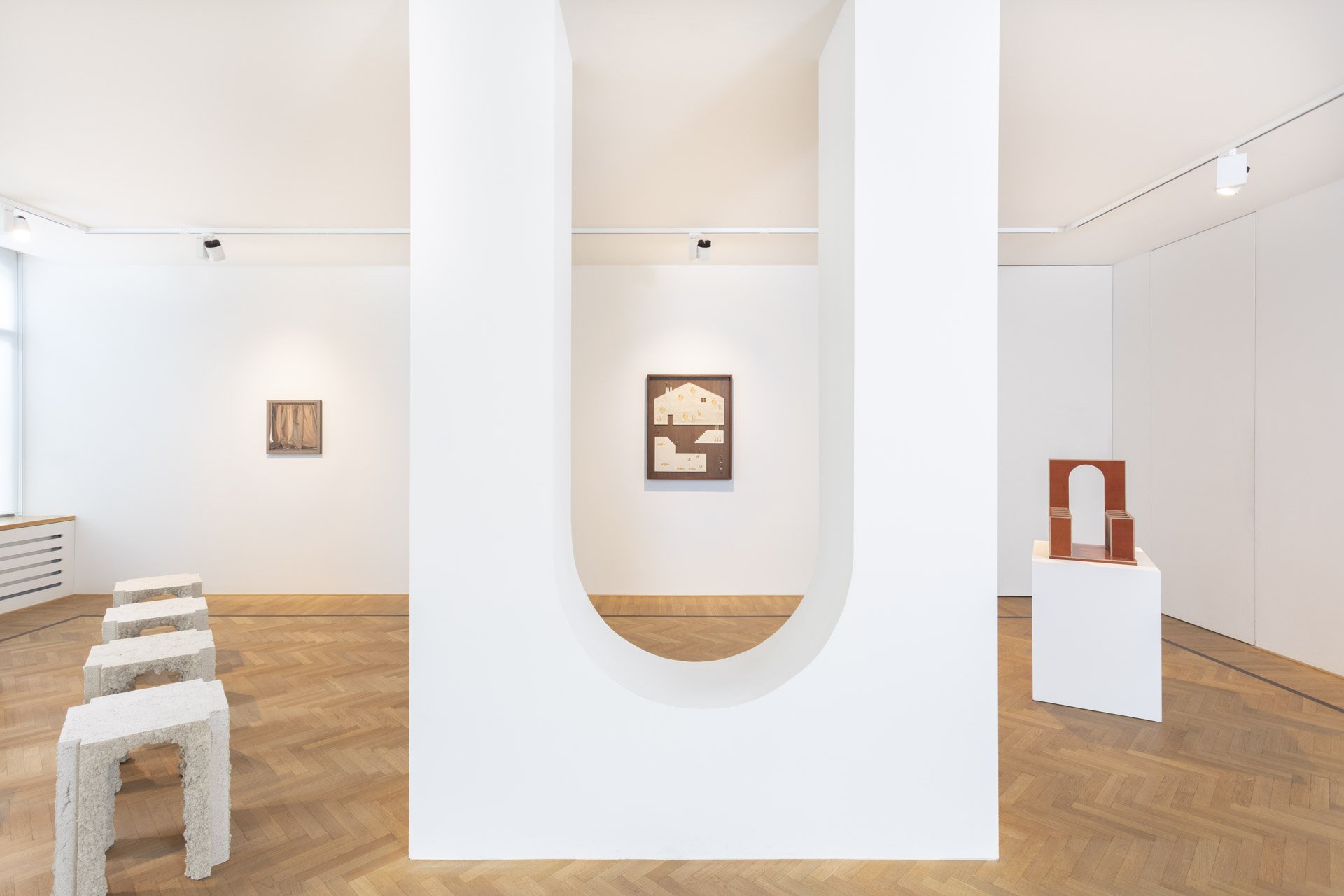

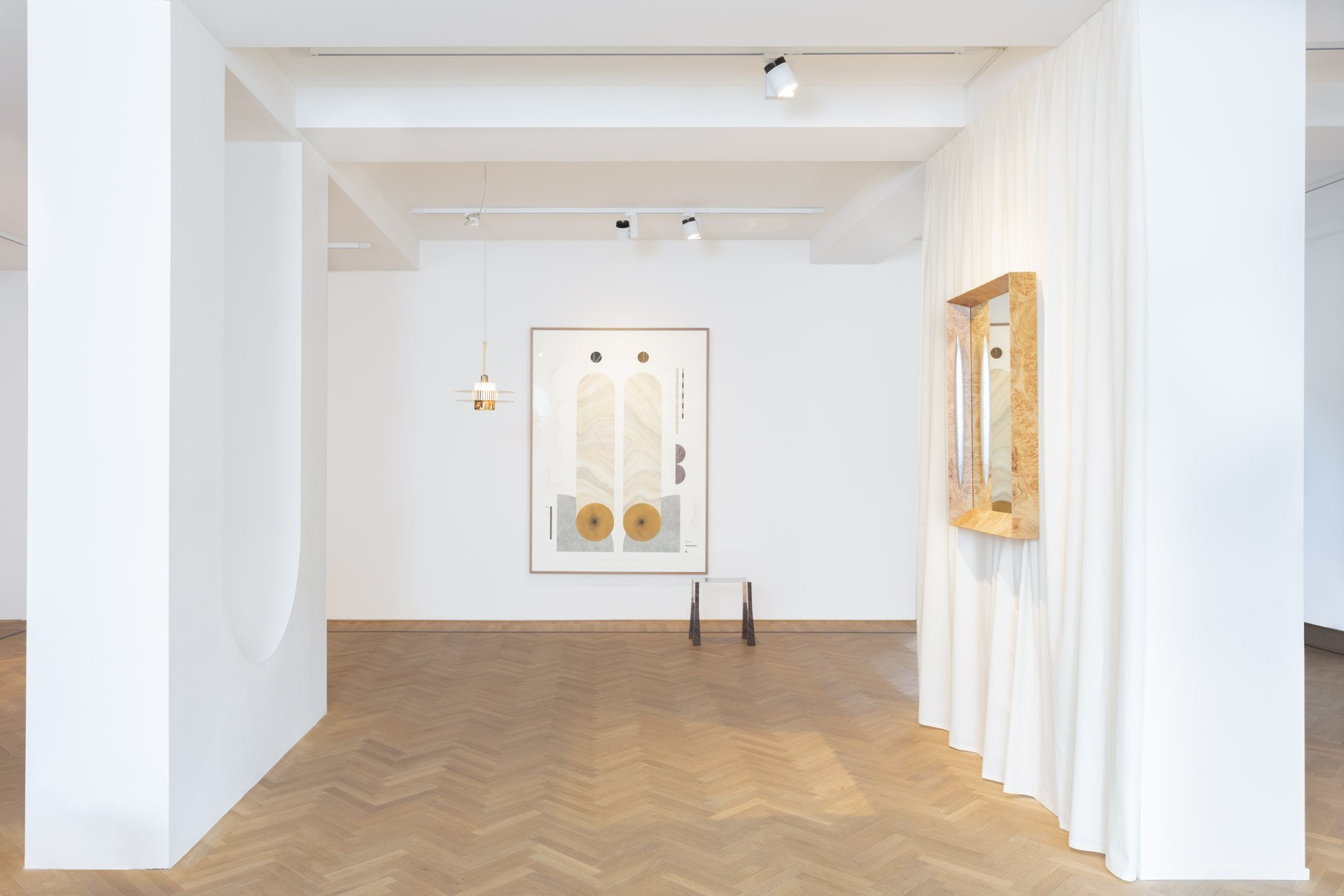
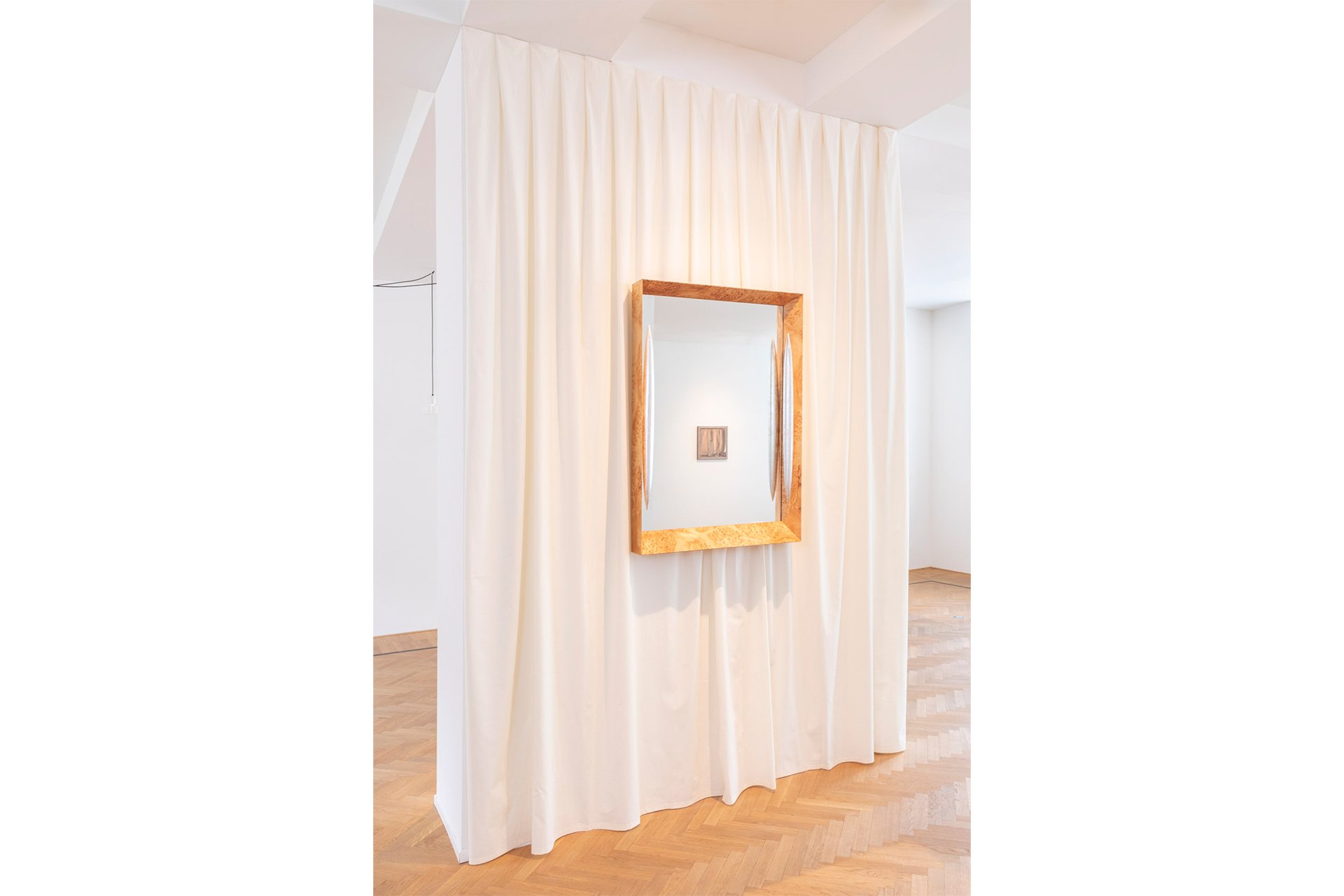
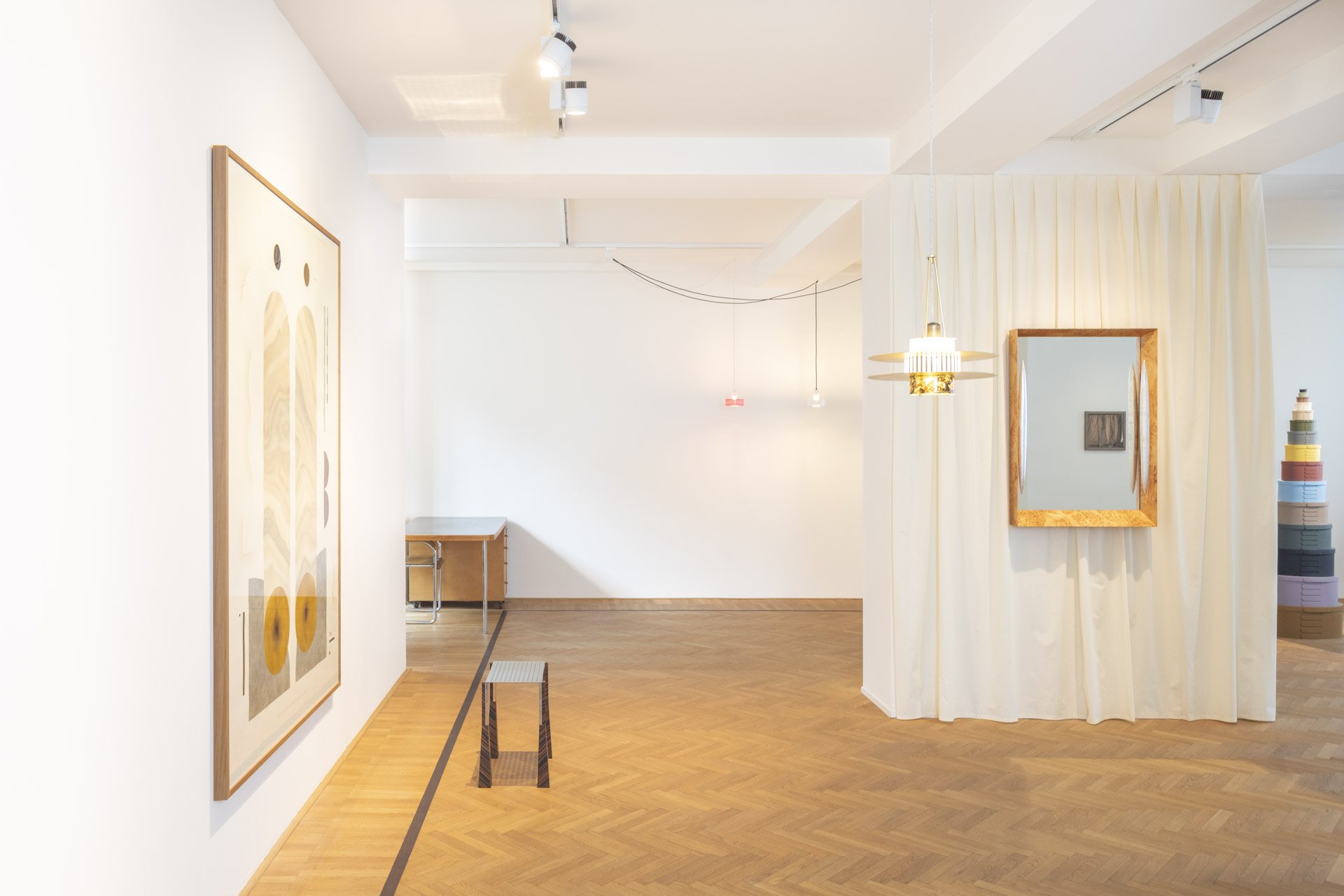
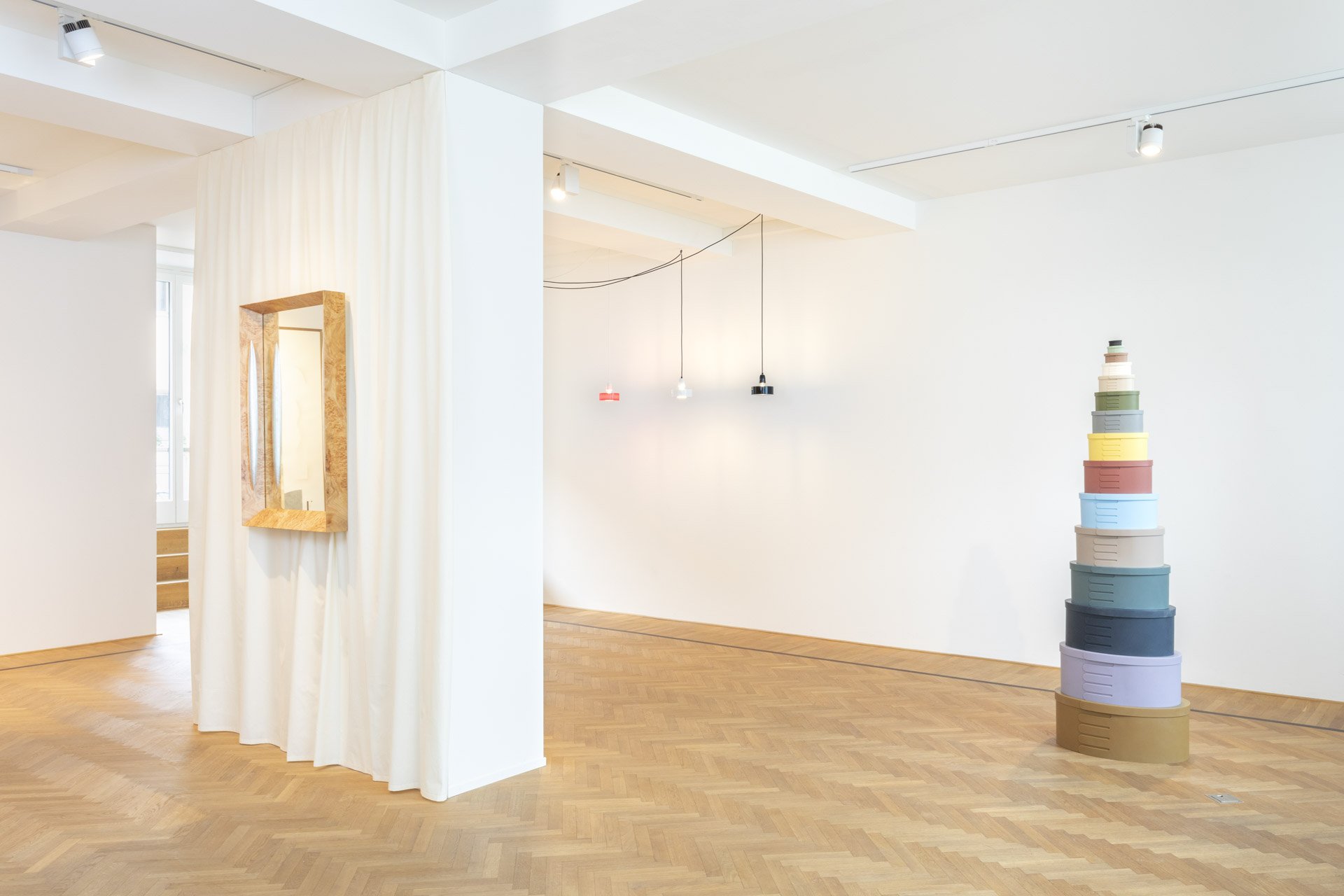
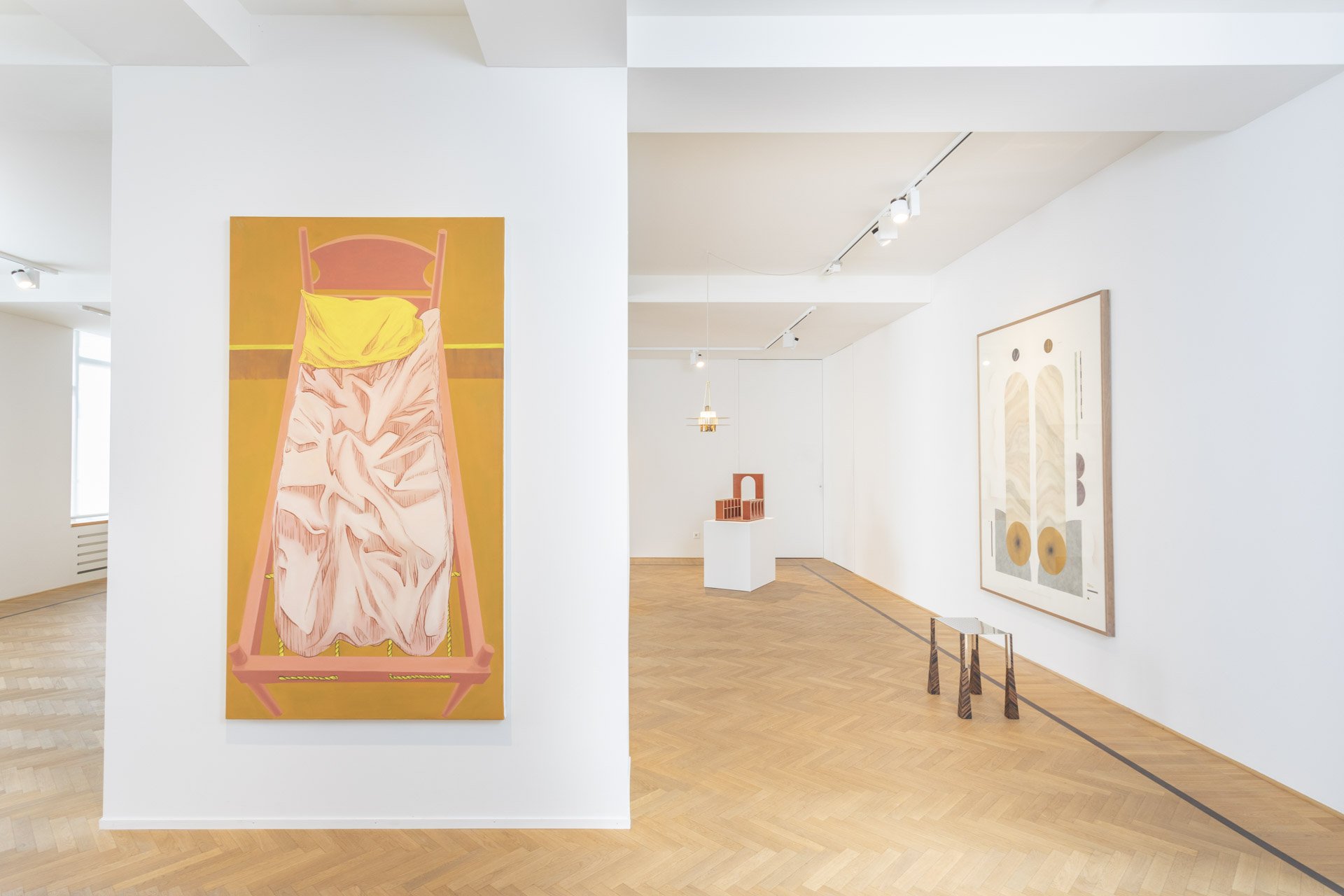
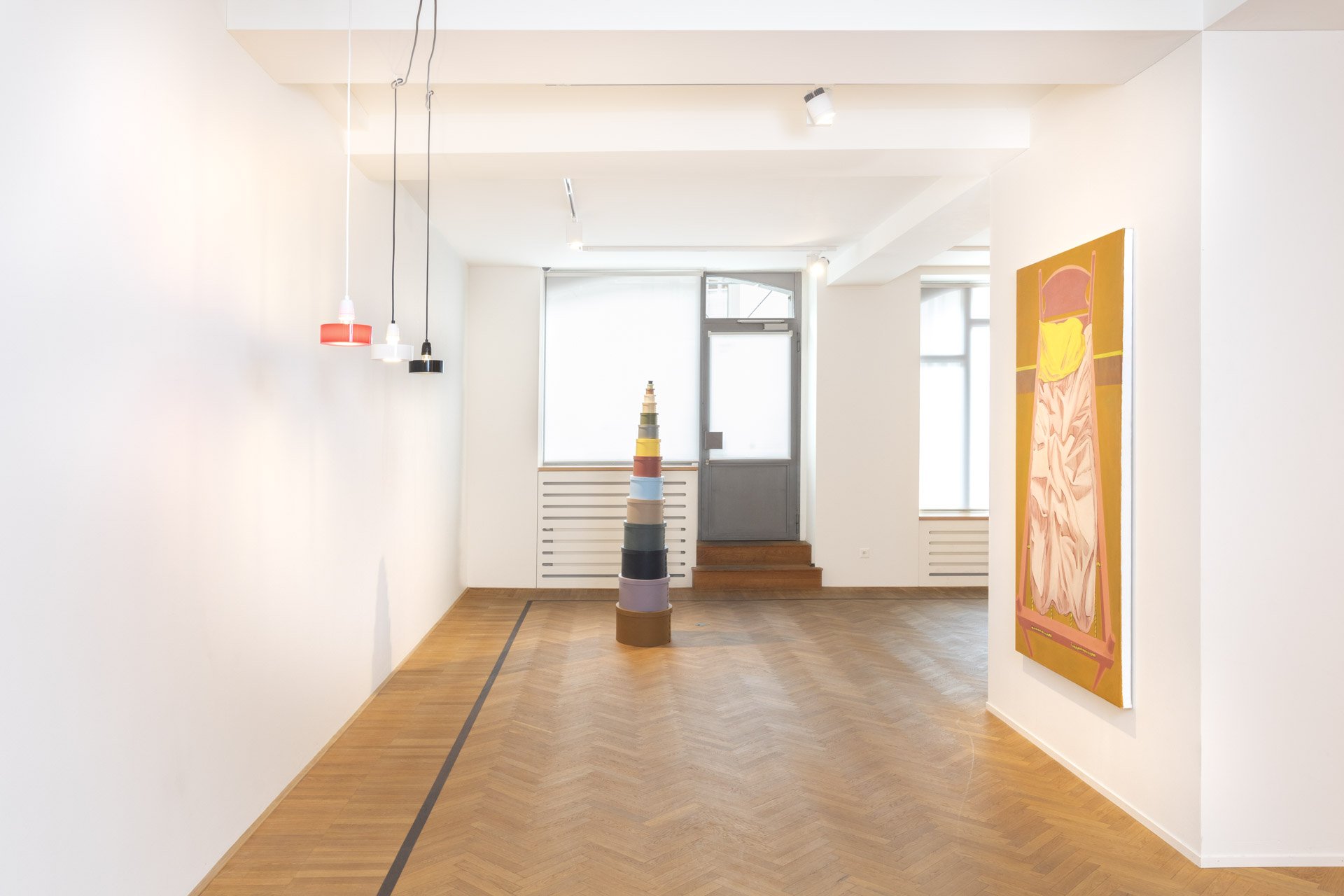
EXHIBITED WORKS:
PRESS RELEASE
[PDF]
The distinction made between fine art and design is a mutable one, and has been throughout modernity at least. Both necessitate that decisions are made regarding language, means of production, and intended outcomes. Both are communicative and seek an audience. Some cannot exist without one. Interior brings together both classes of object, placing them not only in dialogue with each other, but in some cases even suggesting definite mise en scènes. It seeks to explore the interplay between representation and presence, the process of realising concepts in objects, and the subversion of both perspective and use-value.
Elena Alonso’s seductive work has tended to adopt the vocabulary of architectural design, suggesting an organised spatial relationship between the volumes, colours and textures she deftly produces. Here she continues to cultivate a complex and uncertain terrain between geometric abstraction and tactile, embedded sculpture. Her Lámpara ABC lifts her lexicon from the plane of the image and resolves it into a lantern. The metamorphosis feels seamless, and the aura of her work takes on new life, at once refined and elementary. There is a similar tone to EJR Barnes’ Second Perspective with Two Forms - a work typical of his burgeoning practice. The self-taught London-based maker has an atypical approach to making objects, using poetic of contextual cues to develop his work. The results are always functional and seem to ask to be touched, but exist in a space between art and design, evading definite categorisation. The marriage of retro-futurism and art deco creates a portal-like framing device at once elegant and absurd.
Caitlin MacBride’s work explores the relationship between craft and devotion, especially with reference to the Shaker movement. In Tied to the Mast a bed of rudimentary form is transformed into a bold, towering composition, the ropes that form its base tense and unyielding against the crumpled sheet covering it. The canvas struggles to contain the dynamic, exaggerated perspective, and the stark line of skirting cutting through the composition further animates its structure. The allusion to the crucifixion is unclear, as if the association were made only incidentally. This same history is to be found in Sam Stewart’s Lefty, which similarly plays with human scale. This stack of synthesised Shaker boxes tells of process, order and conformity in production. The moulds historically used to create the oval forms of such boxes within Shaker communities in America are called ‘followers’, and the fingers that give the work its title seem to hold that narrative protectively. Stewart’s sculptural work often resembles and even functions as everyday domestic objects. His Leroy Table has an animistic quality that belies its refined, rigid construction. It is whimsical in nature, yet utterly serious in style and execution.
Killian Rüthemann makes sculptures of elemental materials that owe a legacy to Minimalism. There is in his work however a wry sense of humour and play of chance. The assembly of his Fair Face stools is uncannily animated, as if a conference interrupted. And yet while formally explicit they are practically useless. With Gaffa Rüthemann creates an improbably elegant functional object through a somewhat awkward act of assemblage, combining a standard light fitting with custom made silicone parts that resemble rolls of industrial tape. A similarly unique relationship to Minimalism is to be found in the approach of Raphaël Zarka, who qualifies his work as ‘documentary sculpture’, using the vocabulary of abstraction in the reproduction of pre-twentieth century objects. To Zarka there is a continuity drawn through elements of medieval and pre-modern formalism that is inseparable from Minimalism. In drawing this line his own work is activated by a rich historical precedent that takes in the development of scientific and religious philosophies. In Stalli he reproduces an enclosed pew from a fifteenth century Sassetta painting into a contemplative object, inverting the immersive logic of religious architecture and placing us outside of it. This perspectival shift from enclosed subject to observer transports us from one behaviourally structured interior into another - that of the gallery. Christian Hidaka’s Sipario performs something similar. Borrowing its name from the Italian for theatre curtains, it continues his consciously staged exploration of the gallery space as an immersive and active architectural environment. Where this often sees Hidaka extend the field of his paintings beyond the limits of the canvass and onto the gallery walls, here with a deft and simple gesture he affirms the space’s interiority by way of a small window onto the world outside. The curtain that obscures our view reflects our anticipation back, grounding us as observers.
Laila Tara H’s intricate work employs the historical techniques of the Indo/Persian miniature tradition, into which her own articulation of personal identity and history is woven. In (Un)relenting the domestic is made the scene of charged narrative tension, played out in the contrast between form and void. The pictorial plane is disrupted by cuts and folds, pins and pearls that create dimensional depth and shadow play. The materials she uses are redolent with meaning, labour and value, from handmade hemp paper to precious metals and natural pigments.
Where the architecture of a given gallery might more often be wished out of sight, the presence of the space is important here. It organises the work and mediates one’s interactions with it. The gallery has a designated function as a particular type of interior. What is it about being inside a museum or a church, or somebody else’s home, that suggests to us how we ought to act, and in what relation to the objects within them? The works in this exhibition are intended to drive a deliberately staged exploration of space and the principal of form over function.
(Curation and text by Fabian Lang)
